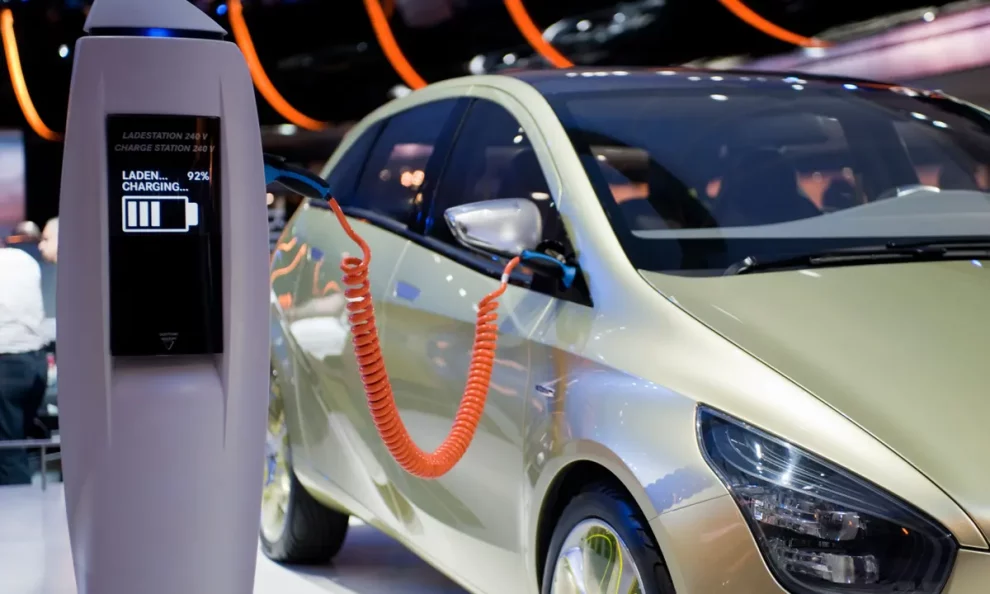The electric vehicle (EV) revolution is no longer a whisper on the horizon; it’s roaring through the automotive landscape, shattering records and capturing imaginations. Recent sales figures paint a dazzling picture: a surge in EV purchases, defying economic anxieties and proving public thirst for sustainable transportation.
This boom isn’t a one-hit wonder. Several factors are fueling the electric fire:
- A smorgasbord of exciting new models: Gone are the days of limited EV options. Today’s showrooms boast a dazzling array of electric vehicles, from sleek sedans and rugged SUVs to sporty coupes and family-friendly minivans. This diversity caters to a wider range of tastes and needs, drawing in new segments of the car-buying public.
- Range anxiety fading into the rearview mirror: Technological advancements are steadily boosting battery range, pushing past the dreaded “range anxiety” that once held back hesitant buyers. With EVs now comfortably cruising hundreds of miles on a single charge, road trips no longer require pit stops at imaginary electric oases.
- Charging infrastructure sprouting like electric wildflowers: The fear of being stranded with a drained battery is also waning as charging infrastructure catches up. Public charging stations are becoming increasingly common, popping up at workplaces, shopping centers, and even rest stops. Additionally, home charging solutions are becoming more affordable and accessible, allowing drivers to refuel in the comfort of their garages.
- Fuel cost savings lighting the way: As gas prices fluctuate like a stock market in a hurricane, the steady hum of an electric engine whispers alluring tales of fuel-cost savings. With electricity often significantly cheaper than gasoline, EVs offer a substantial long-term economic advantage, especially as renewable energy sources continue to expand.
- Environmental consciousness shifting gears: The climate crisis is top of mind for many, and EVs offer a tangible way to make a difference. Choosing an electric vehicle isn’t just about personal transportation; it’s a statement of environmental responsibility, a contribution to a cleaner future for generations to come.
Of course, challenges remain. Affordability and access to charging infrastructure still present hurdles for some. But the rapid pace of innovation and the sheer momentum of the EV wave suggest these barriers will crumble in the face of a determined, electric-powered future.
The sky’s the limit for EVs. With advancements in battery technology, design, and infrastructure, we can expect even more electrifying options to hit the market in the coming years. This isn’t just a shift in transportation; it’s a cultural transformation, a collective decision to embrace a cleaner, greener, and more exciting way to move through the world. So buckle up, fasten your seatbelts, and get ready for the thrilling ride that is the EV revolution.

The Variety of Electric Vehicles Appeals to Diverse Tastes
Gone are the days when electric vehicles were limited to just one or two nerdy, diminutive hatchbacks with underwhelming range. Today there is a vibrant selection of EVs available, from sleek high-performance sedans to rugged off-road trucks and spacious family SUVs. This newfound diversity caters to a much wider spectrum of tastes and needs.
For gearheads, electric sports cars like the Tesla Model S Plaid deliver blistering acceleration on par with exotic supercars. Meanwhile, startups like Rivian are crafting electric adventure vehicles equipped for off-road exploits. Families enjoy abundant space and cutting-edge tech in EVs including the Hyundai IONIQ 5 and Volkswagen ID.4.
Even commercial vehicles are getting electrified, with eco-conscious models like the Ford E-Transit catering to contractors and small business owners seeking savings on fuel. EV selection has blossomed into a veritable smorgasbord, enticing diverse groups of car shoppers who previously felt left out.
Range Anxiety Fades as Battery Tech Improves
One key factor dampening mainstream EV adoption has been “range anxiety” – the fear of running out of juice mid-journey. But thanks to rapid advancements, increased driving range is slaying those old phobias. The latest EVs can drive 300+ miles per charge, quelling worries over regular daily driving and even long road trips.
For example, Lucid’s Air Dream Edition sedan boasts a whopping 520 mile range, over 100 miles more than the longest-range Tesla Model S. Meanwhile, more affordable options like the Kia EV6 achieve 310 miles per charge. Such figures ease range anxiety substantially, bringing EVs into the mainstream for more motorists.
Ongoing battery research also hints at even greater ranges down the road. Solid state batteries on the horizon could drive over 500 miles in more affordable EVs within this decade. As range continues to soar, it removes one of the last barriers curtailing mass EV adoption.
Charging Infrastructure Growth Accelerates
Hand in hand with concerns over range, the lack of robust charging infrastructure has also slowed EV uptake. But charging stations are now proliferating rapidly across the country, vanquishing this additional adoption barrier.
Fast chargers are popping up at malls, restaurants, hotels and other convenient locations, often allowing an 80% charge in under an hour. Workplaces are also installing charging stations for employee use. And affordable home charging makes overnight residential refueling simple. Apps like ChargePoint and PlugShare map nearby stations, eliminating charge-up guesswork.
The infrastructure growth is substantial. Today there are over 48,000 public charging locations across the U.S. That’s a 60% increase from 2020 alone as per Department of Energy data. And continued government investment should expand access even further, recently exemplified by the $5 billion for EV charging in the Bipartisan Infrastructure Law.
Skyrocketing Gas Prices Magnify EV Savings
While battery range and infrastructure see ongoing improvements, gas prices have grown increasingly volatile over the past year. Russia’s invasion of Ukraine intensified inflationary pressures, causing the average gas price in the U.S. to surge over $4 per gallon with no ceiling in sight. This magnifies the fuel savings EVs offer compared to their gas-guzzling counterparts.
Electricity prices are far more stable than gasoline, and charging an EV battery is inherently more efficient than burning fossil fuel. Experts estimate fueling an EV costs roughly half as much per mile compared to a similar gas vehicle. For drivers putting on 15,000+ miles annually, the yearly savings run into the thousands.
As renewable energy like solar and wind continue displacing coal, EV electricity costs could fall even further. Combine these plunging “fuel” prices with nonexistent oil changes or exhaust repairs, and EVs promise dramatically lower operating costs for the average driver.
Eco-Conscious Motorists Embrace Sustainability
For environmentally-motivated car shoppers, electric vehicles also offer the chance to slash their carbon footprint. Compared to even the most efficient gas car, an EV charged on the U.S. electrical grid produces less than half the CO2 emissions per mile.
Plus, EVs have no tailpipe emissions whatsoever. Widespread adoption could massively improve air quality, especially in dense urban areas. Hence eco-conscious consumers view purchasing an EV not just as a personal financial decision, but a vote for sustainability and a cleaner future.
Many municipalities are also joining this green EV movement. New York City just voted to ban new natural gas hookups in buildings, accelerating the transition to electric heating and appliances. More local governments may follow suit, providing additional incentives to citizens to go electric.
Overcoming Affordability Challenges
While the EV revolution charges ahead, the higher upfront cost of electric vehicles still leaves them out of reach for many mainstream buyers. And until charging infrastructure blankets the entire country, range and access to chargers remain limitations in rural regions.
But the brisk pace of innovation and massive industry appetite for growth looks set to overcome these hurdles. Multiple automakers plan to launch more affordable electric cars with a starting price around $25,000 within a few years, opening the EV market to new demographics.
Streamlined manufacturing using modular platforms will also lower production expenses, passing along cost savings to customers. And battery technological leaps allowing 500+ mile ranges could tackle remaining infrastructure gaps inhibiting adoption in remote areas.
The Future is Electric
In summary, electric vehicles are accelerating out of their niche and into the mainstream car market. A confluence of factors including product choice, reduced range anxiety and charging infrastructure growth have combined to drive record EV sales.
Moreover, excitement continues building around new models from both legacy automakers and agile startups. Dramatically lower operating costs compared to gas vehicles further stoke consumer appetite. And ecological motivations encourage EV purchases from citizens seeking cleaner air and climate solutions.
Legislation, regulations and investments should help electric vehicles eclipse nearly all significant adoption obstacles within the next decade. The auto industry appears irreversibly transitioning towards EVs and away from internal combustion. So for consumers, businesses and municipalities prioritizing innovation, savings and sustainability, the thrilling electric future has arrived.
















Add Comment